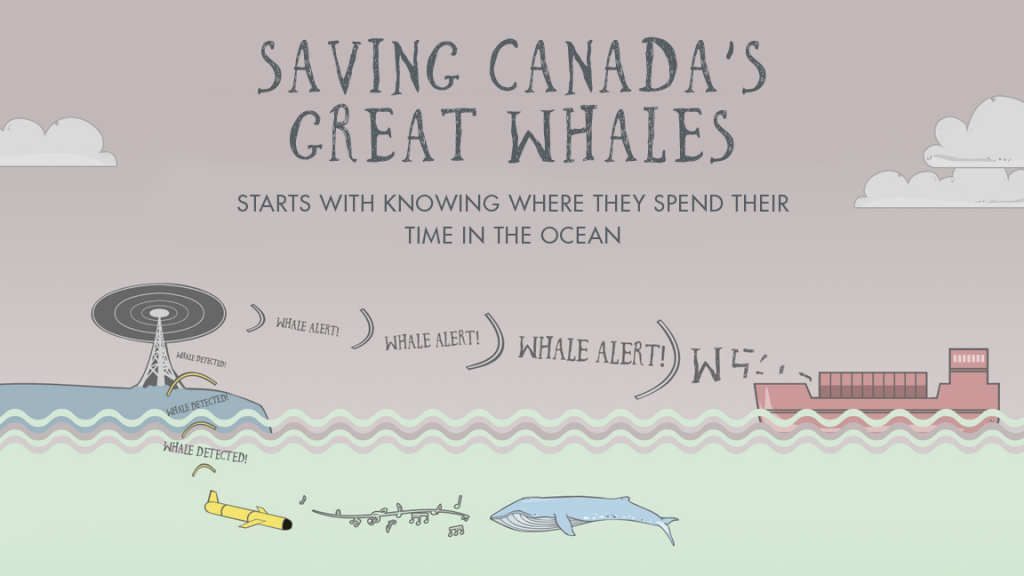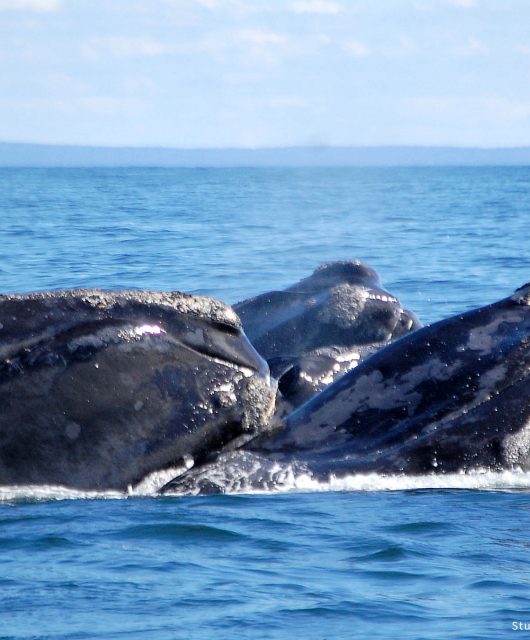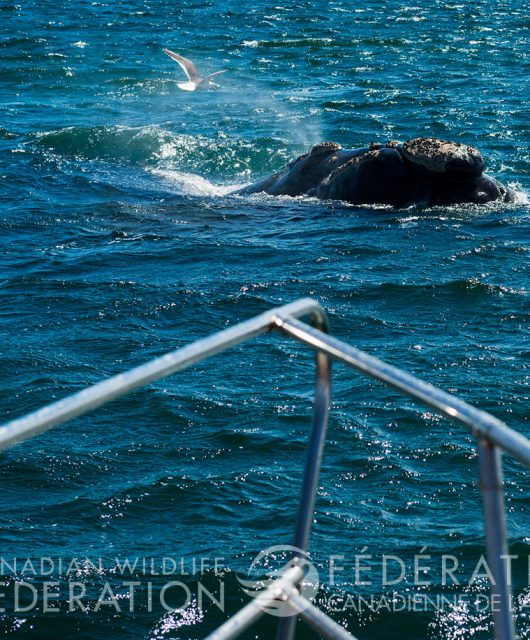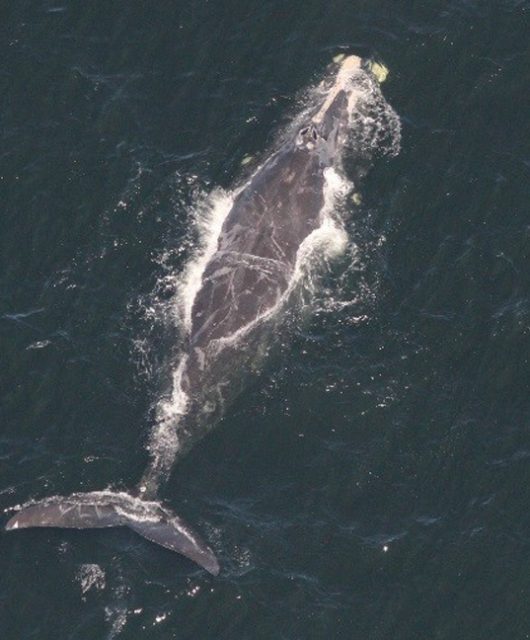The next time you’re outside swimming on a summer day and a boat goes by, dunk your head underwater and have a listen – the sound from the boat is much louder underwater. That is because sound travels much more efficiently in water than it does in air. Imagine how a whale must feel when a big tanker ship or ferry with a loud propeller zooms by while they are diving – probably irritated, and it may even hurt.
Communications for whales
Whales are very sensitive to sound because they communicate with one another using sounds, and some use it to hunt for food. Sound is a much more effective way to stay in touch in the ocean than sight (the sense we humans use most), because light cannot penetrate very deep into the ocean, so whales cannot see very far around them. By using sound, whales can communicate over long distances, and this helps them stay in groups, keep their young from straying, find mates, and stay aware of other kinds of animals that may be nearby.
The sounds that baleen whales make are deep, beautiful, and haunting. Some people use recordings of the sounds of these animals during yoga and meditation because they are so deeply relaxing. There are lots of places online where you can listen to hours of these recordings, such as here.

Using sounds to do science
As a researcher, I am using sound to monitor for whales because they are difficult to detect by just looking for them (because they spend most of their time underwater, and because there is a lot of ocean to search). There are two steps to do this. First I have to record sounds in the ocean to hear if there are whales around. I do this using specially designed microphones attached to our gliders. The gliders are ideal tools for recording sound in the ocean because they have no engines and are very quiet – so the only sounds the microphone hear are whales and other underwater noise.
The second step is that once the microphones record sounds, I have to be able to tell the different species of whales apart, without ever seeing which animal made the sound! It is very hard to know this, even if you are out in a boat watching the whales, because whale sounds can travel 10s and even 100s of kilometers through the water. So the sounds you hear could be coming from other whales very far away.
Knowing your whale sounds
I am able to tell different species apart because, fortunately, different species of whales make very different sounds. For example, humpback whales produce long and varied ‘songs’ that have repeated phrases, just like a verse and chorus of a pop song on the radio. On the other hand, right whales have a much smaller repertoire, making the same kind of sound over and over and over. You can hear some of the sounds different whales make on our website (move your cursor over each whale icon to listen to a recording of that species).
This post was written by guest blogger Kim Davies, Liber Ero Postdoctoral Fellow, Department of Oceanography, Dalhousie University.





